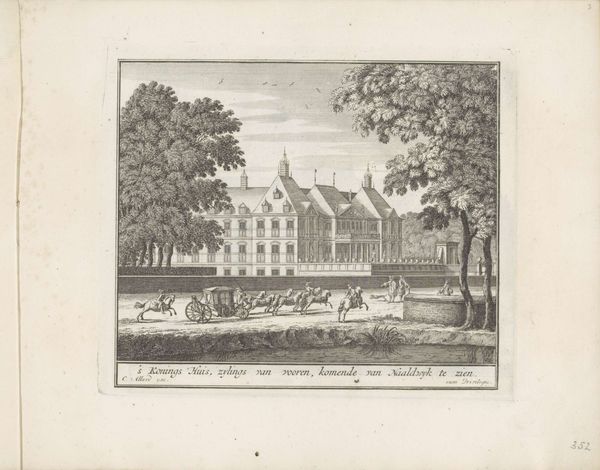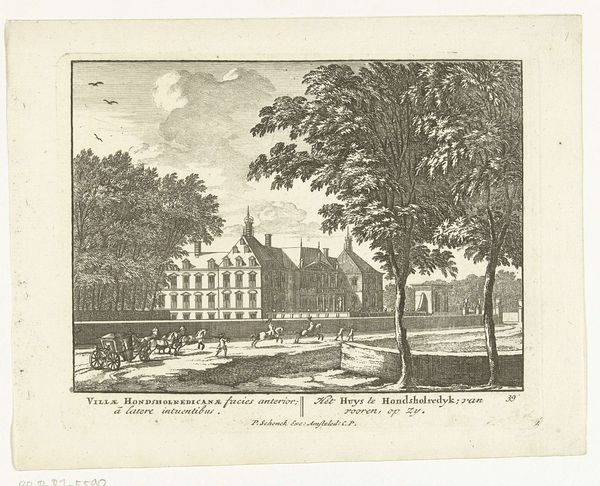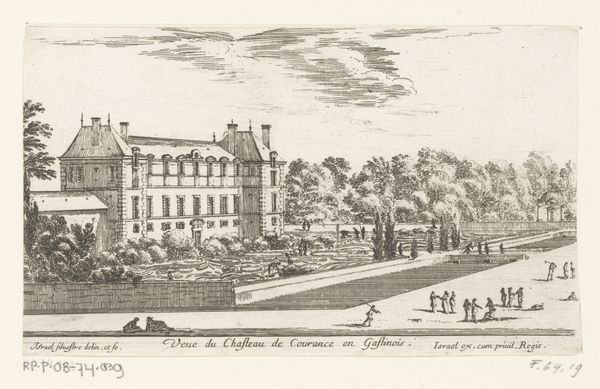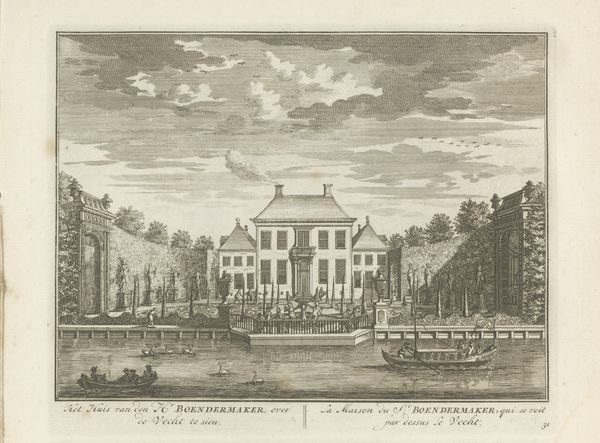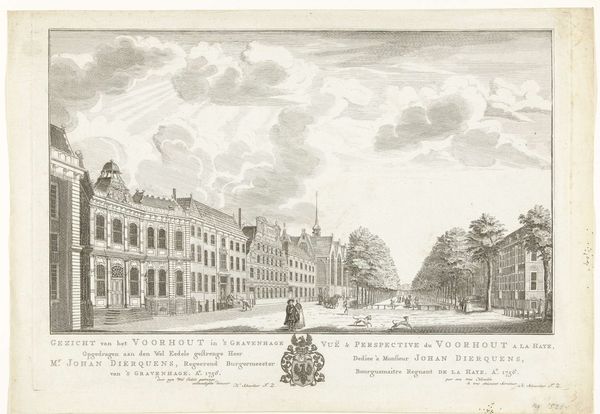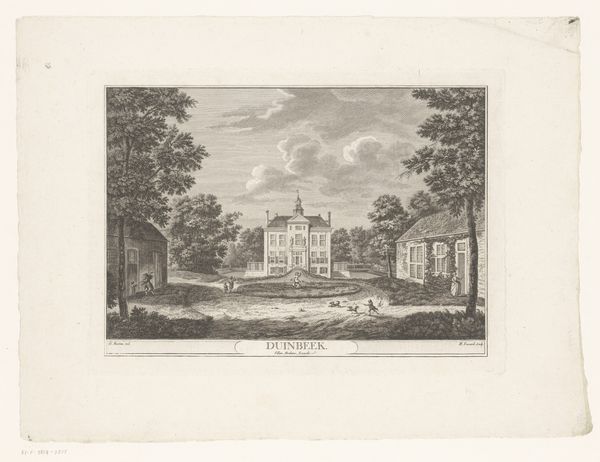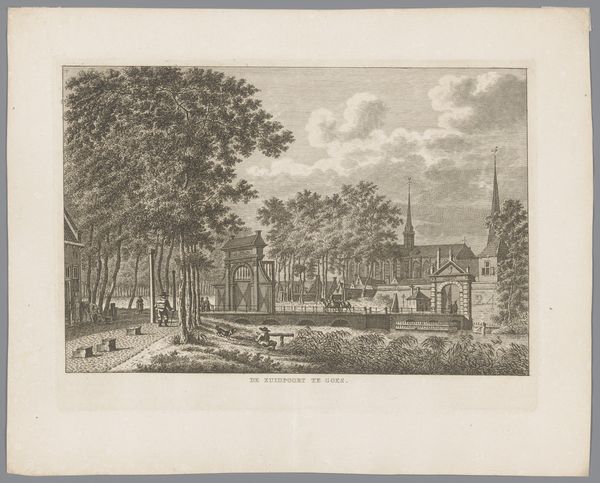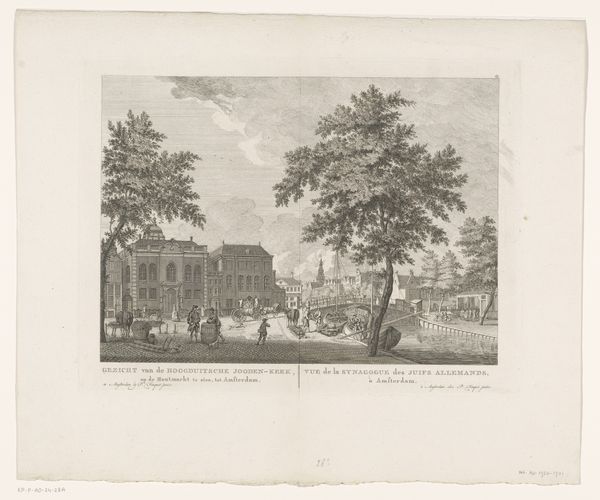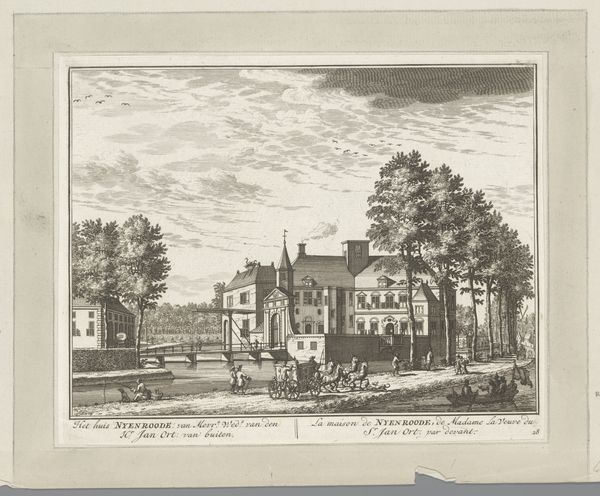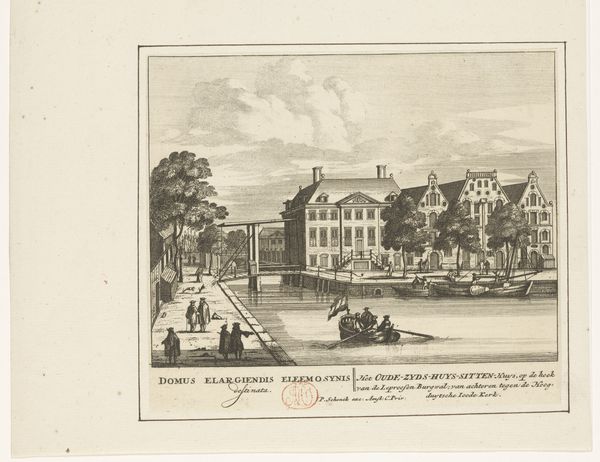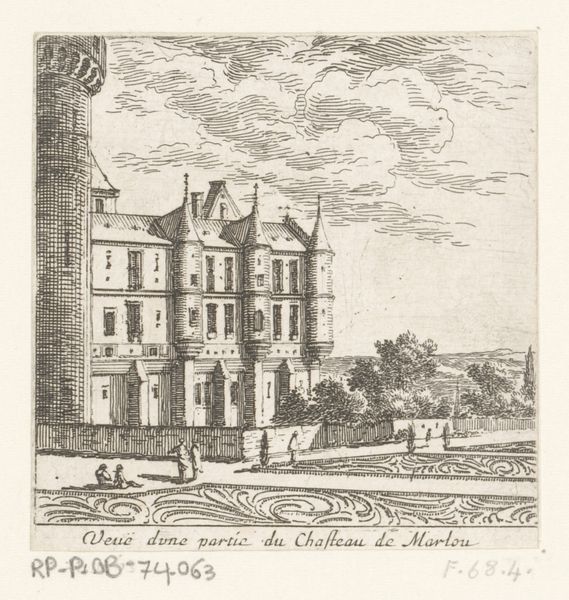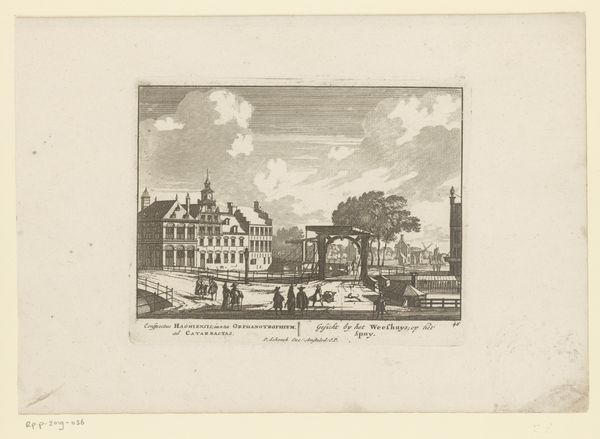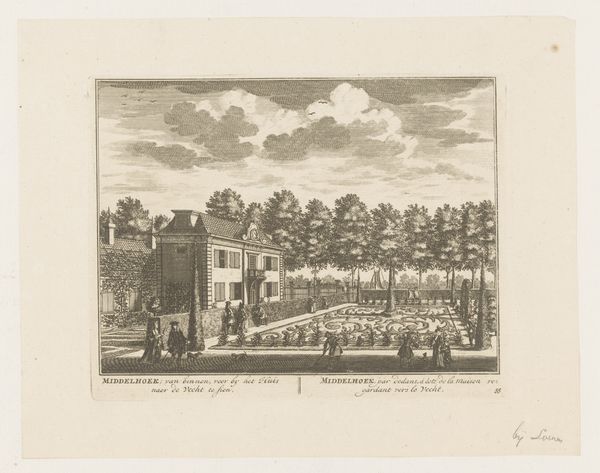
print, etching
#
baroque
# print
#
etching
#
landscape
#
etching
#
cityscape
Dimensions: height 132 mm, width 169 mm
Copyright: Rijks Museum: Open Domain
Curator: This etching, dating from between 1694 and 1697, gives us a glimpse into the grandeur of "Gezicht op Huis Honselaarsdijk," or View of Honselaarsdijk Palace, a now-demolished palace in the Netherlands. Editor: Immediately, the scale jumps out. You have this almost modest palace tucked behind these incredibly grand, dark trees. And what I find really interesting is the use of the etching technique to really suggest different material qualities of foliage, brick, sky. Curator: Precisely. The image certainly captures the spirit of the baroque era. The estate was of great symbolic importance. Built in the early 17th century, Honselaarsdijk Palace served as one of the primary residences for the House of Orange-Nassau. It stood not merely as a dwelling but as a potent representation of the family's political strength and dynastic aspirations during a formative period in Dutch history. Its very architecture broadcast a message. Editor: I find it interesting that print was used. What impact do you think it had for consumption and the construction of national identity? It seems deliberate and very clever to take these really expensive markers of status – palace, grounds, family – and make them repeatable objects for a different sort of market. Curator: Definitely. By making these available, by consuming these prints, one is then partaking in an association with that history and status, constructing national identity through a shared visual culture. Editor: The act of multiplying, and dissemination is key to how these places come to hold a collective symbolic value. It reminds us that meaning isn't just embedded; it’s fabricated through process, materiality, and then eventually consumption. Curator: Absolutely, seeing Honselaarsdijk in this medium truly allows us to see its enduring presence through symbols, rather than simply observing the depiction of the structure itself. Editor: Exactly – it gives an added appreciation for the act of creating these lasting legacies from the material level up.
Comments
No comments
Be the first to comment and join the conversation on the ultimate creative platform.
